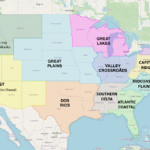You’ve probably heard the term “gig work” or the phrase “gig economy” in the news quite a bit over the last few years. A lot of that conversation has focused on the new category of gig jobs created by app companies like Uber and Instacart.
But for years — long before you could order up a ride to the airport or a tofu breakfast burrito from your phone — there’s been a workforce of independent contractors or “freelancers,” doing professional, often high-paying jobs for clients and businesses. And the prevalence of freelance work has only increased since the COVID-19 pandemic.
A study by Upwork found that 36% of American workers freelanced in 2020, and three in five say they’re making the same or more money freelancing than they would be working for a traditional employer. The study also found that as much as half of the total Gen Z workforce has freelanced at some point in the last year, and nine out of 10 plan to continue.
Freelancing has been a way for some people to get by after losing their job or needing to scale back during the pandemic. But for many, freelancing is a career choice. They enjoy the freedom that comes with working for themselves, choosing the projects they take on, and working remotely on their own time. Both small businesses and large corporations (and everything in between) hire freelancers to help with various projects, from copywriting to graphic design to data science.
There are plenty of benefits to freelance work that you might find enticing — setting your own hours, avoiding office politics, or even a “pants optional” dress code. But being a freelancer also means you are your own employer — there’s no sales or accounting team to take care of things for you. Finding clients and managing the business is up to you. There’s a lot to consider and plan for, especially when you’re just getting started. So let’s dig into some basics.









